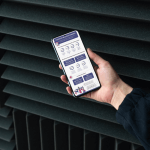Headless architecture is quickly becoming a popular choice for businesses looking to streamline their digital operations. With a headless setup, the frontend and backend of a website or application are decoupled, allowing for greater flexibility and scalability. This separation of concerns also makes it easier to integrate new technologies and make updates without impacting the user experience. It’s possible to transition to a headless setup while keeping your current backend in place.
Why make the move to Headless commerce
One of the main benefits of headless commerce is that it allows e-commerce retailers to have more control over their user experience. With traditional e-commerce platforms, the frontend and backend are tightly coupled, which means that any changes to the frontend require changes to the backend as well. With headless commerce, the frontend and backend are decoupled, which means the company can make changes to the frontend without affecting the backend. This allows for greater flexibility and faster iteration times.
Another reason to consider headless commerce is that it allows for easier integrations with other systems and platforms. Integrations with tools such as CRM systems, social media platforms, and marketing automation tools can be implemented considerably easier and faster. This can help the company to better manage its customer relationships and create more personalized experiences faster.
Headless commerce can also be more scalable than traditional e-commerce platforms. Each component of the frontend and backend can be scaled independently, which can help to reduce the overall cost of running the e-commerce platform.
So, there are numerous reasons to make the move to headless. But to start off, it may be easier to do so while keeping your current backend.

Why keep your current backend
Moving to headless commerce while keeping your current backend might be the right move for you for several reasons:
- Familiarity and stability: Your development team already has experience working with the current back-end system. Keeping the existing backend can provide stability for the website’s functionality and prevent disruptions during the transition.
- Cost-effective: Migrating to a new backend system can be a costly and time-consuming process. Keeping the existing backend can help to save costs and resources.
- Data storage: The existing backend may already have a large amount of data stored, such as customer information, purchase history, and product information. Moving to a new system would involve migrating all of that data, which can be a complex process.
- Integrations: The existing backend may be integrated with other systems, such as payment gateways or inventory management systems, which would need to be retained.
- Personalization: You may have a backend system that is customized or has many proprietary features that you do not want to lose. Using a headless approach allows you to keep using your existing personalized backend system while still being able to make changes to the frontend as needed.
Lastly, you may simply already have a backend system that works well for you and that you do not want to change. Whatever the reason, keeping your current backend is possible and in no way hinders your ability to move to a headless architecture.

How to move to headless while keeping your current backend?
If an e-commerce site wants to move to a headless architecture while keeping its current backend, they can do so by implementing a headless frontend.
The frontend, which is the user-facing part of a website or application, is responsible for displaying the interface. It is responsible for handling user interactions, making API calls, and displaying the data. This allows for more flexibility, scalability, and better performance. It also allows the same backend to be used with different presentations on different devices or platforms more easily.
Steps to adopting a headless frontend:
- Identify your goals and requirements. This includes identifying which features and functionalities will be retained on the backend and which will be moved to the frontend.
- Assess the existing backend to ensure that it can support the headless architecture. This includes evaluating the API capabilities of the backend, as well as the ability to handle increased load and traffic.
- Create a plan for how the frontend will communicate with the backend. This includes deciding on the API structure and endpoints, as well as the technologies that will be used to build the frontend.
- Build the frontend or select a headless frontend provider like Front-Commerce. Building a frontend with a solution like Front-Commerce is a cost-effective and time-efficient way to develop your headless frontend. We provide scalability, pre-built integrations, flexibility, and pre-built e-commerce-specific features. We help you save development time and costs while providing guidance and support.
- Test the frontend and backend together to ensure that they are working properly. This includes checking for bugs and ensuring that all functionality is working as expected.
- Deploy the frontend and backend to a production environment. This step involves deploying the frontend to a server, such as a Content Delivery Network (CDN), and the backend to a server or hosting platform.
- Monitor and maintain the frontend and backend to ensure optimal performance and to fix any bugs that may arise.
These steps will differ depending on the complexity of the website, the size of the team, the technologies used, and the resources available. Want to know how you should kick off your headless project? Get in touch now to chat with headless experts!

Did you know M-Commerce will be dominating in the coming years?
